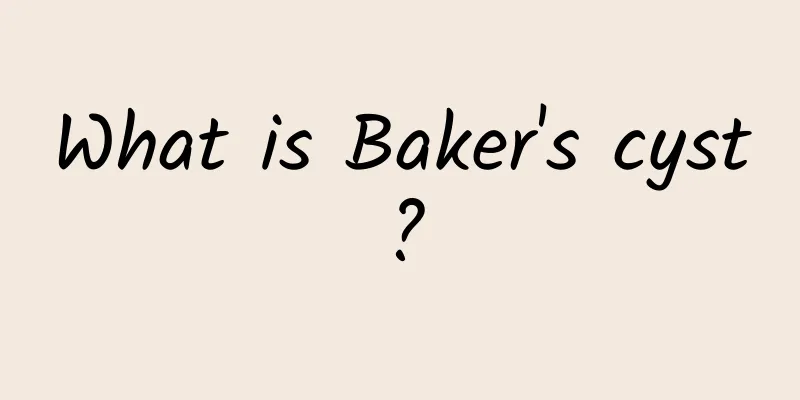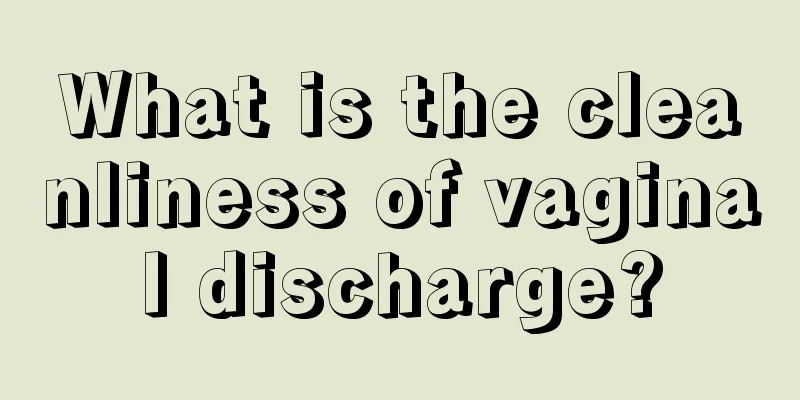What is Baker's cyst?

|
This is the 2857th article of Da Yi Xiao Hu Many people have not heard of Baker's cyst, but everyone is familiar with its nickname, which is popliteal cyst. Popliteal cyst is very common in clinical practice. Some people find it accidentally without any discomfort; some people find it when they come to the doctor because of joint discomfort. What is a popliteal cyst? The previous two issues were all about cysts, so I believe everyone is familiar with the concept of cysts. As the name suggests, popliteal cysts are cysts that occur in the popliteal fossa behind the knee joint. Usually, synovial cysts of the medial head of the gastrocnemius are clinically called "Baker's cysts. How do popliteal cysts occur? The most widely accepted view is that it is a one-way valve mechanism. When the joint pressure increases, the fluid in the joint overflows through the channel between the joint and the bursa (but cannot return) to form a cyst. The cyst cavity contains a jelly-like fluid that is thicker than the fluid in the joint cavity. However, some cysts are not connected to the joint cavity. Who is prone to popliteal cyst? Clinically, males are more likely to have popliteal cysts than females, and unilateral cysts are more likely to occur than bilateral cysts. Most popliteal cysts are secondary to intra-articular diseases, such as meniscus injury, anterior cruciate ligament injury, intra-articular infection and trauma, osteoarthritis, rheumatoid arthritis, etc. What are the symptoms? Many people with popliteal cysts do not have any abnormal symptoms in the early stage of the disease. Some people only have discomfort or distension in the popliteal fossa, and some have weakness in the lower limbs. Generally, there is no obvious effect on the flexion and extension function of the knee joint. When the cyst is large, a round, smooth, and fluctuating mass can be felt in the popliteal fossa behind the knee joint. When the cyst grows to a certain extent, it can affect the flexion and extension of the joint, or cause pain or soreness after more knee joint activities, often accompanied by the manifestations of the primary disease of the knee joint. How is it diagnosed? Ultrasound has unique advantages in diagnosing cystic diseases. It is simple, convenient, economical, non-invasive and radiation-free. It is currently a commonly used examination for diagnosing popliteal cysts. MRI examination can observe the communication opening with the joint cavity, which is like a "bird's beak". It can not only accurately show the cyst and understand the relationship between the cyst opening and the joint cavity and surrounding structures, but also observe the coexistent lesions in the joint that other imaging methods cannot show, such as meniscus tear, cartilage injury, ligament injury, etc. It is of great significance for guiding surgical plans and evaluating prognosis. what to do? Popliteal cysts are benign lesions and do not require treatment if they do not cause symptoms. However, if the cyst is large or has obvious symptoms, surgical removal can be used for treatment. Ultrasound-guided aspiration of cystic fluid combined with topical application of corticosteroids is effective in treating popliteal cysts, but the recurrence rate is high. Recently, minimally invasive arthroscopic cystectomy has been increasingly used in the treatment of popliteal cysts. During the operation, the cyst root should be cut off at a high position and sutured through, with good results. Author: Department of Orthopedics, Tianjin Third Central Hospital Guo ShuzhangChief Physician |
<<: Lower back pain, leg numbness, how to save your herniated lumbar disc?
Recommend
Why don't I have my period if I'm not pregnant?
There are often some minor problems during women&...
Is it good to drink more water during menstruation?
During menstruation, you should try to keep your ...
Can I have a baby if I smoke one month into my pregnancy?
Some women in daily life also like to smoke. Smok...
Something like snot coming out from below
Everyone should be very familiar with gynecologic...
Exercise lowers blood sugar. How can diabetics exercise? How to exercise? This article explains how diabetics can exercise
Life lies in exercise, and diabetics also need to...
What are the nutritional values of golden jujube? How to eat golden jujube
There are many ways to eat golden thread jujube. ...
How to treat cervical erosion after abortion
Nowadays, there are a lot of women who choose abo...
How to use moxibustion for diarrhea? What are the benefits of moxibustion for diarrhea?
The application of moxibustion to treat diarrhea ...
Can early cervical cancer be cured?
Cervical cancer is a common gynecological disease...
Is breast cancer contagious by eating together?
Can breast cancer be transmitted by eating togeth...
What anti-inflammatory drugs should be taken for gynecological diseases?
Gynecological diseases are a type of disease that...
What is intrauterine bleeding during pregnancy?
A woman's body changes dramatically after pre...
What does it feel like after embryo transfer?
When the embryo is implanted after transplantatio...
What is the reason for red blood to appear after the lochia is cleared?
Some mothers may experience red blood again after...
Why can’t I get pregnant even though I ovulate?
Many couples are trying hard to get pregnant, but...









